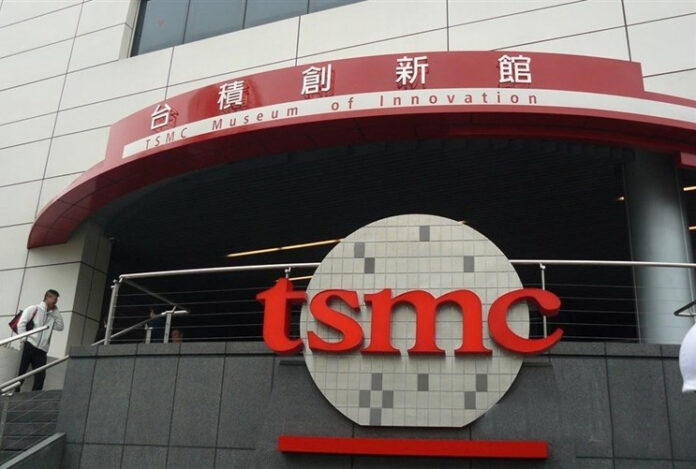Introduction: TSMC Strengthens its Lead
In the third quarter of 2023, Taiwan Semiconductor Manufacturing Co. (TSMC) solidified its position as the global leader in the pure-play wafer foundry industry. According to the latest report from TrendForce, TSMC’s market share increased to 64.9%, further distancing itself from South Korea’s Samsung Electronics, which held the second spot. This remarkable performance was driven by strong demand for high-performance computing (HPC) chips and new smartphone product launches, marking another significant milestone in TSMC’s growth trajectory.
TSMC’s Market Share Surge
TSMC’s market share growth in Q3 was a significant leap, reaching 64.9%, up from 62.3% in the previous quarter. The company reported $23.53 billion in revenue for the July-September period, marking a 13.0% increase from the previous quarter. Key drivers of TSMC’s growth included the release of flagship smartphones and increasing demand for cutting-edge HPC devices, which helped boost both its production capacity and wafer shipments.
Key Performance Highlights for TSMC in Q3 2023:
| Metric | Q3 2023 |
|---|---|
| Market Share | 64.9% |
| Revenue | $23.53 billion |
| Quarter-over-Quarter Growth | +13.0% |
| Key Drivers | Flagship Smartphones, HPC Devices, Increased Production Capacity |
Samsung’s Struggles: Sales and Market Share Decline
On the other hand, Samsung Electronics, despite retaining its second-place position in the market, faced significant challenges in the third quarter. The company reported $3.36 billion in sales, a sharp decline of 12.4% from the previous quarter. This drop can be attributed to the nearing end of the product lifecycle for some of its clients, as well as increasing competition from Chinese semiconductor firms in the mature process technology space.
Samsung’s market share also took a hit, falling to 9.3% in Q3, down from 11.5% in Q2, leaving the company even further behind TSMC. As competition intensifies, Samsung is facing mounting pressure to adapt to the rapidly changing semiconductor landscape.
Key Performance Metrics for Samsung in Q3 2023:
| Metric | Q3 2023 |
|---|---|
| Market Share | 9.3% |
| Revenue | $3.36 billion |
| Quarter-over-Quarter Decline | -12.4% |
| Key Challenges | Product Lifecycle Issues, Increased Competition from Chinese Rivals |
Industry-Wide Growth and Trends
Despite Samsung’s struggles, the overall market for the world’s top pure-play wafer foundry operators showed robust growth in Q3. Total sales for the leading companies in the sector reached approximately $34.9 billion, reflecting a 9.1% increase from the previous quarter and setting a new record, surpassing the figures seen during the COVID-19 pandemic.
A significant contributor to this growth was the adoption of advanced semiconductor technologies, particularly the 3-nanometer and 5-nanometer processes. These cutting-edge technologies continue to see strong demand, fueling growth in the semiconductor industry.
Other players in the market, including China’s Semiconductor Manufacturing International Corp. (SMIC) and Taiwan’s United Microelectronics Corp. (UMC), also experienced growth, with SMIC posting $2.17 billion in sales and securing a 6.0% market share.
Top 5 Pure-Play Wafer Foundries by Q3 2023 Revenue:
| Company | Revenue | Market Share |
|---|---|---|
| TSMC | $23.53 billion | 64.9% |
| Samsung Electronics | $3.36 billion | 9.3% |
| SMIC | $2.17 billion | 6.0% |
| UMC | $1.87 billion | 5.2% |
| GlobalFoundries | $1.74 billion | 4.8% |
Outlook: Emerging Technologies and Market Challenges
Looking ahead, TrendForce predicts that global demand for advanced technologies will continue to drive the growth of the top foundries, particularly in the 3-nanometer and 5-nanometer segments. However, supply constraints in these sophisticated process nodes may result in an inability to meet the robust demand.
While the demand for mature processes (28nm and below) is expected to remain stable or see slight growth, the overall landscape for the semiconductor foundry industry remains competitive, with companies such as TSMC and SMIC leading the charge in emerging technologies.
FAQs:
Q: What drove TSMC’s market share growth in Q3 2023?
A: TSMC’s growth was driven by the strong demand for high-performance computing devices and new flagship smartphone releases. These factors helped increase both production capacity and wafer shipments.
Q: Why did Samsung’s market share decline in Q3?
A: Samsung’s market share decline was due to the nearing end of the product lifecycle for several clients’ products and growing competition from Chinese semiconductor manufacturers in mature processes.
Q: How did the overall semiconductor market perform in Q3 2023?
A: The global pure-play wafer foundry market grew by 9.1% in Q3, reaching a total of $34.9 billion in sales, driven by demand for advanced semiconductor processes.
Q: Which companies are leading in the global semiconductor foundry market?
A: TSMC is the market leader, followed by Samsung, SMIC, UMC, and GlobalFoundries, which are also among the top players in the industry.
Conclusion: TSMC’s Continued Dominance
As the semiconductor industry continues to evolve, TSMC’s position as the leader in the pure-play wafer foundry market looks set to remain strong. With its ability to capitalize on emerging technologies like the 3-nanometer process and sustained demand for HPC devices, TSMC is poised for continued growth, leaving competitors like Samsung further behind.
